site search
online catalog
MODEL 1850 FOOT OFFICER’S SWORD WITH “MONITOR” BLADE BY M.W. GALT & BRO., WASHINGTON, D.C., PRESENTED TO LT. JOHN EXTON BY BATTERY H, 2ND PENNSYLVANIA HEAVY ARTILLERY

Hover to zoom

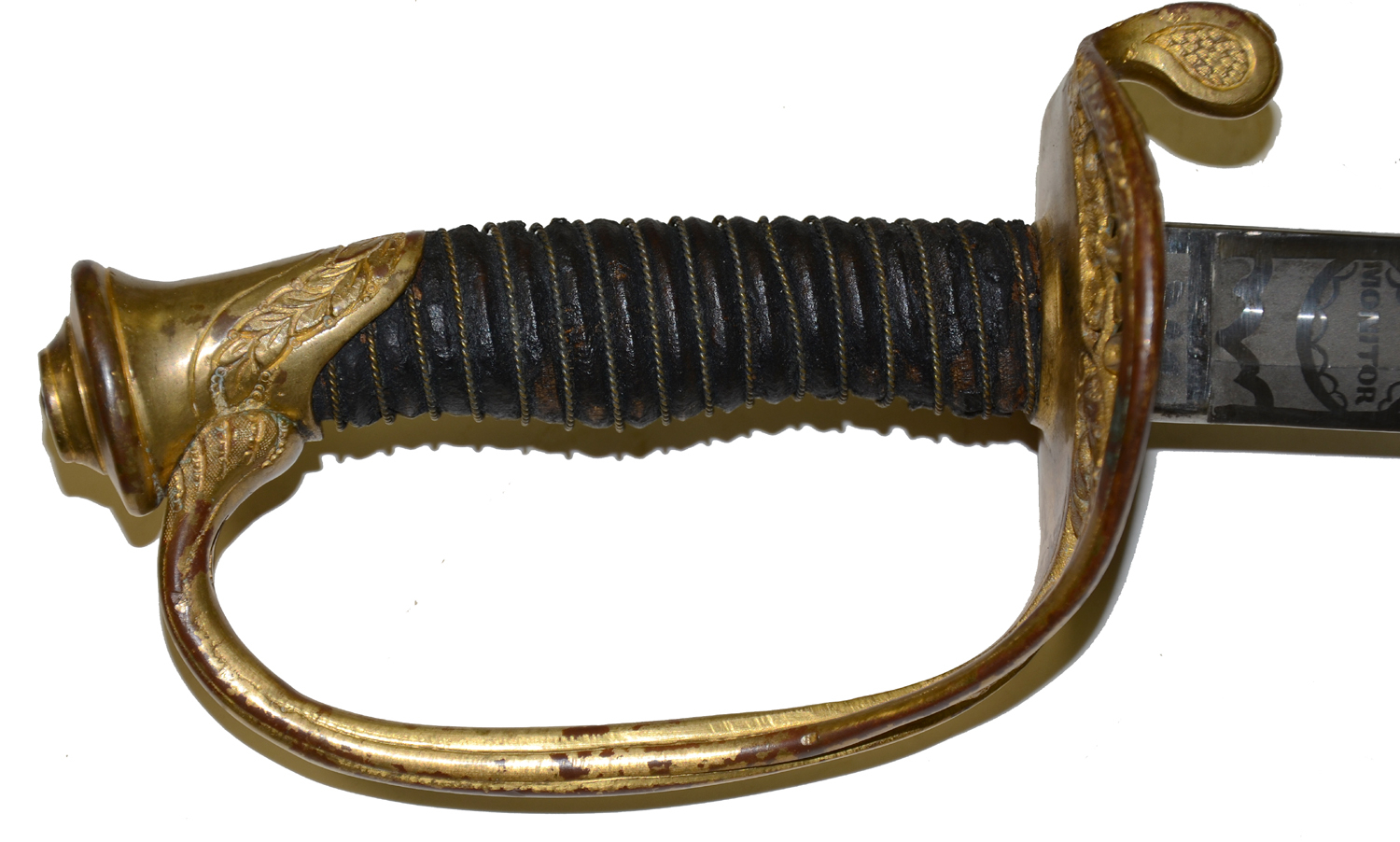
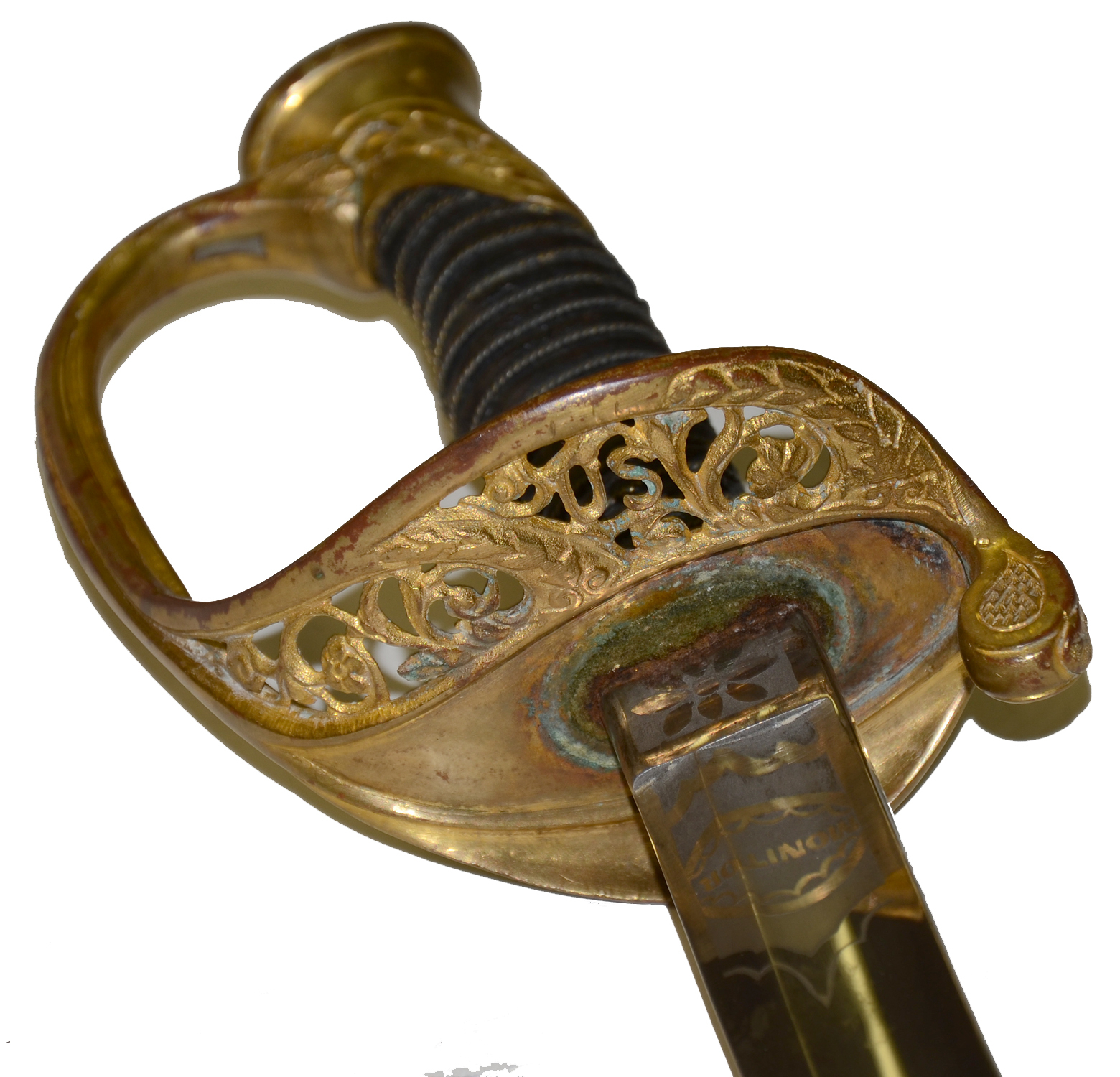
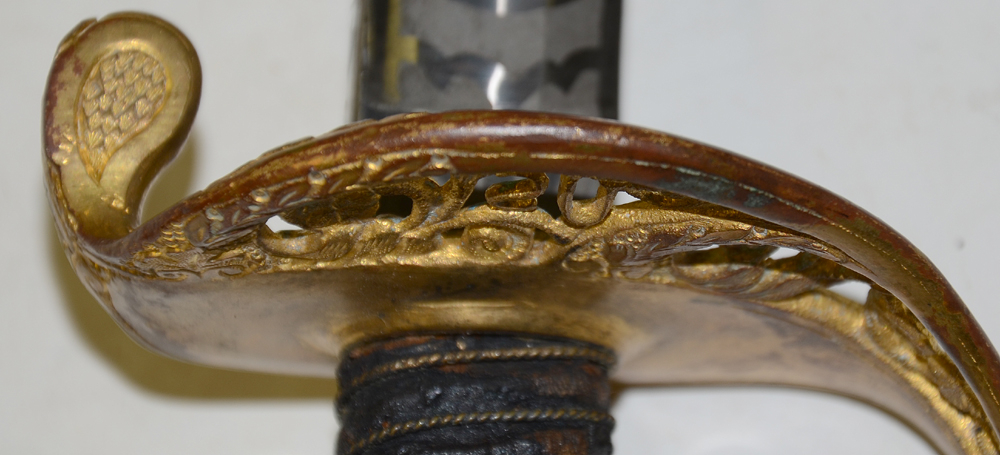
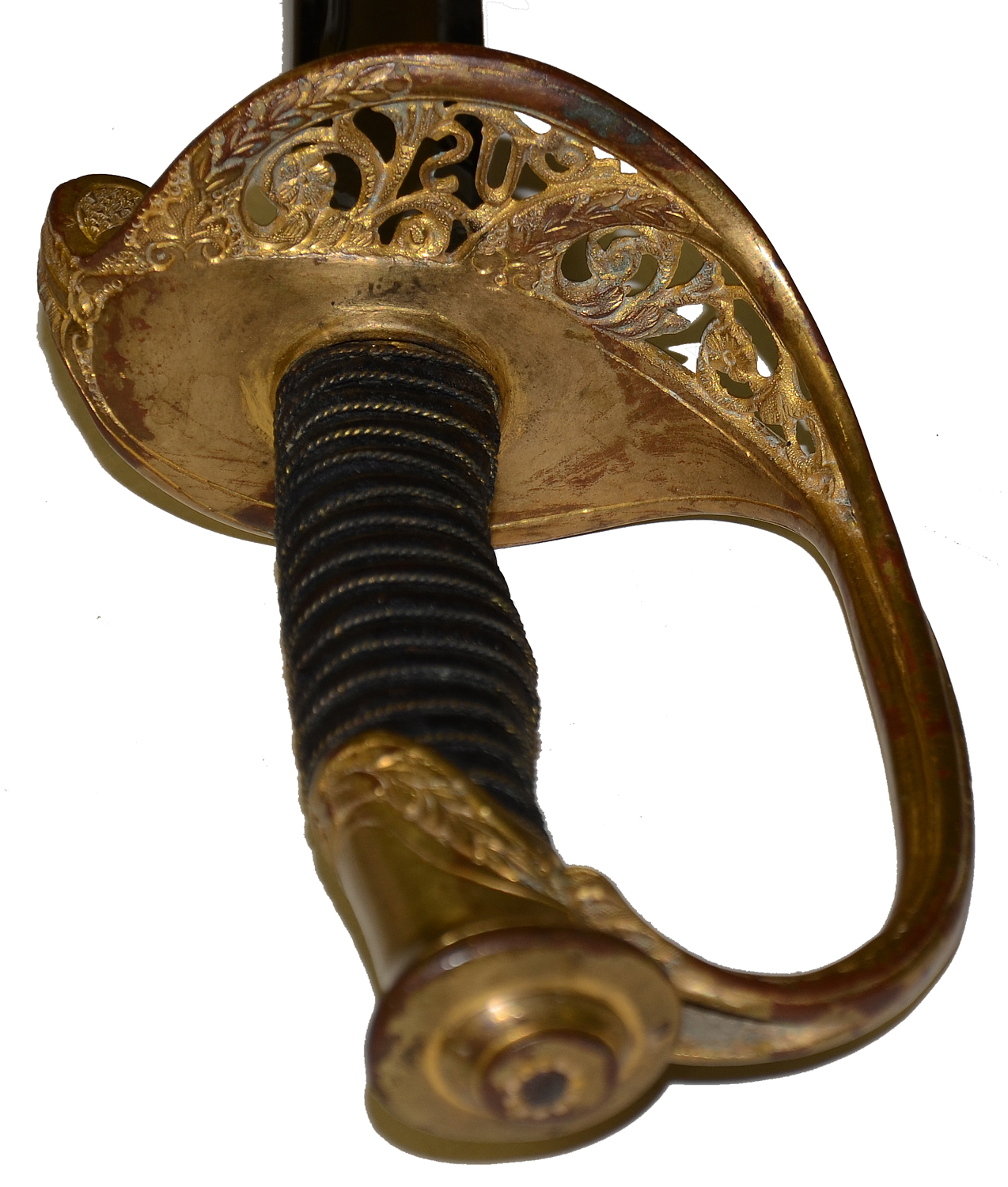
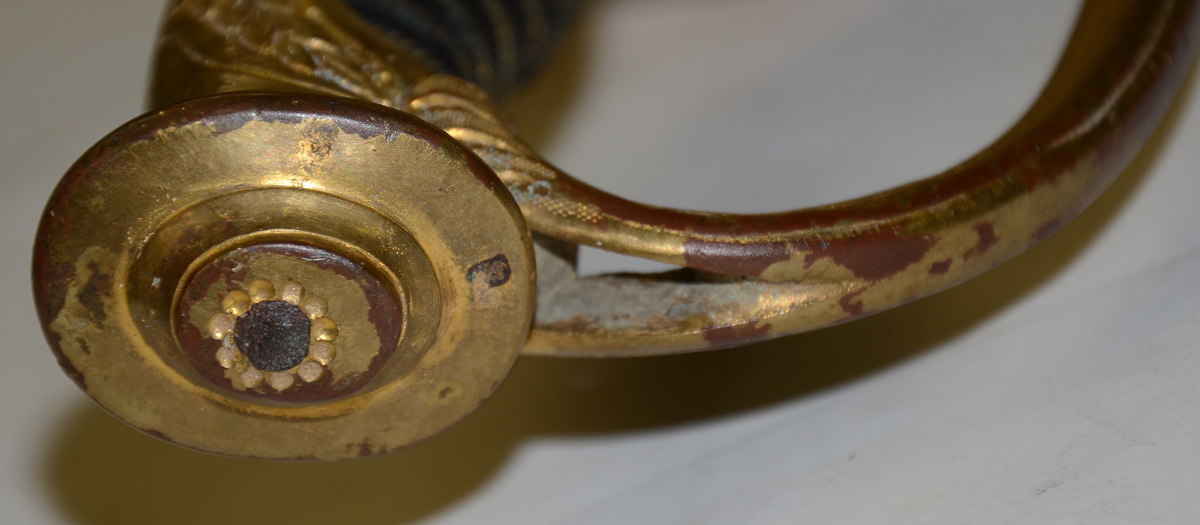
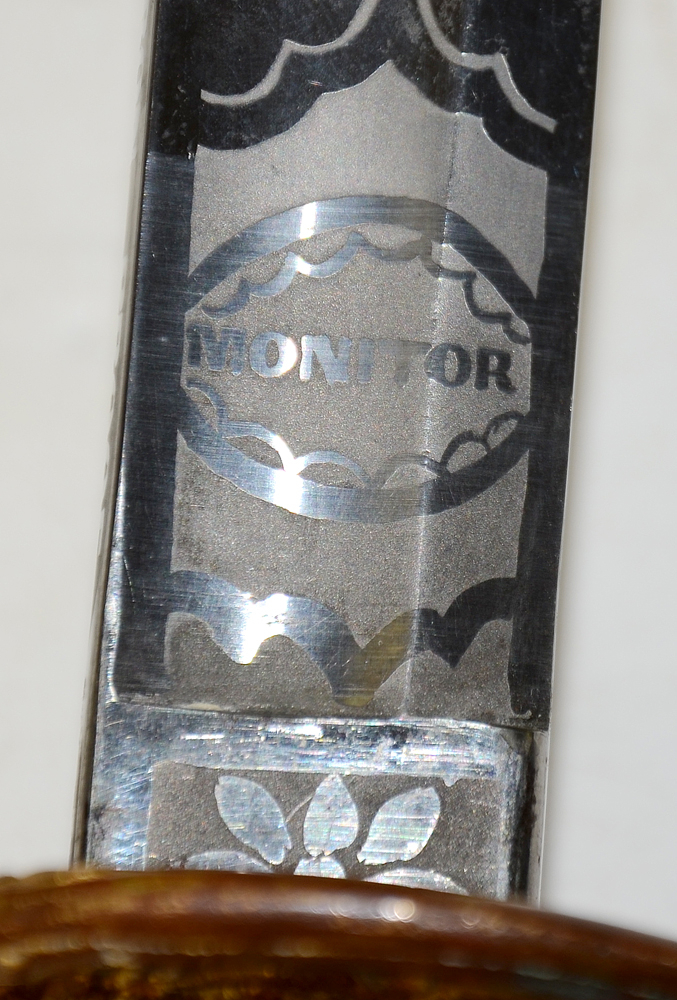
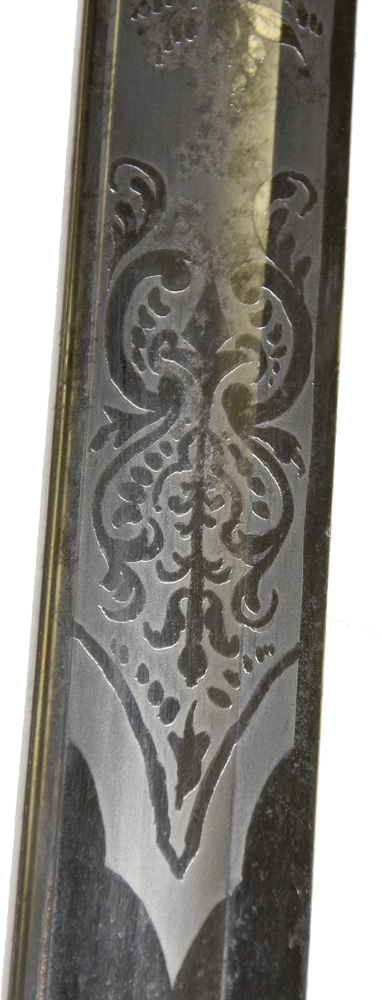

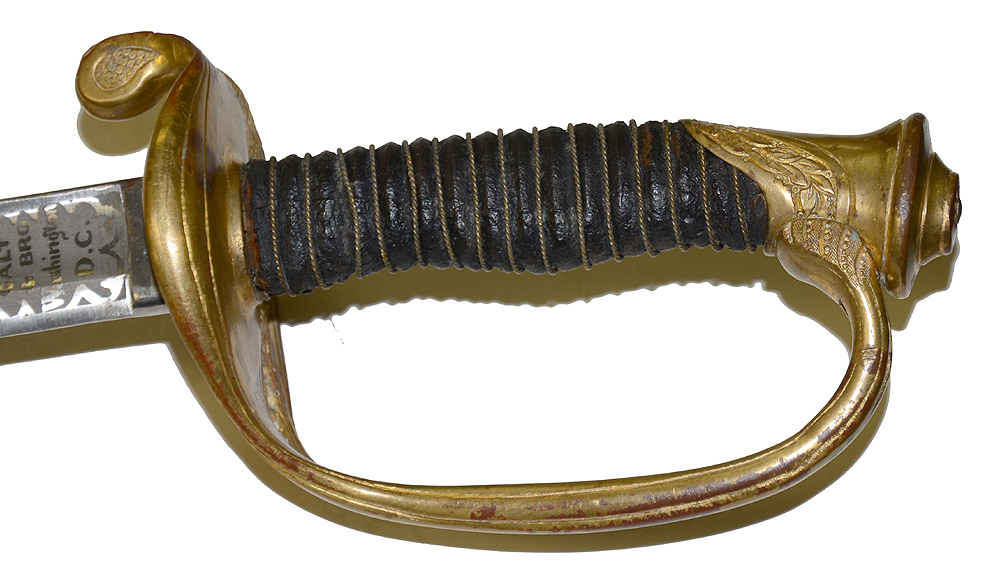
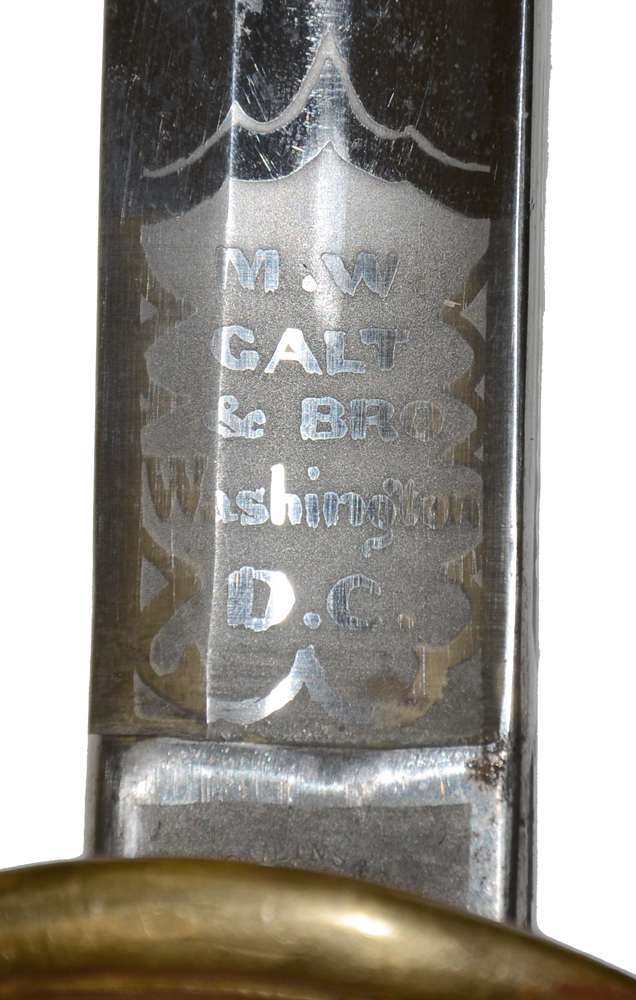
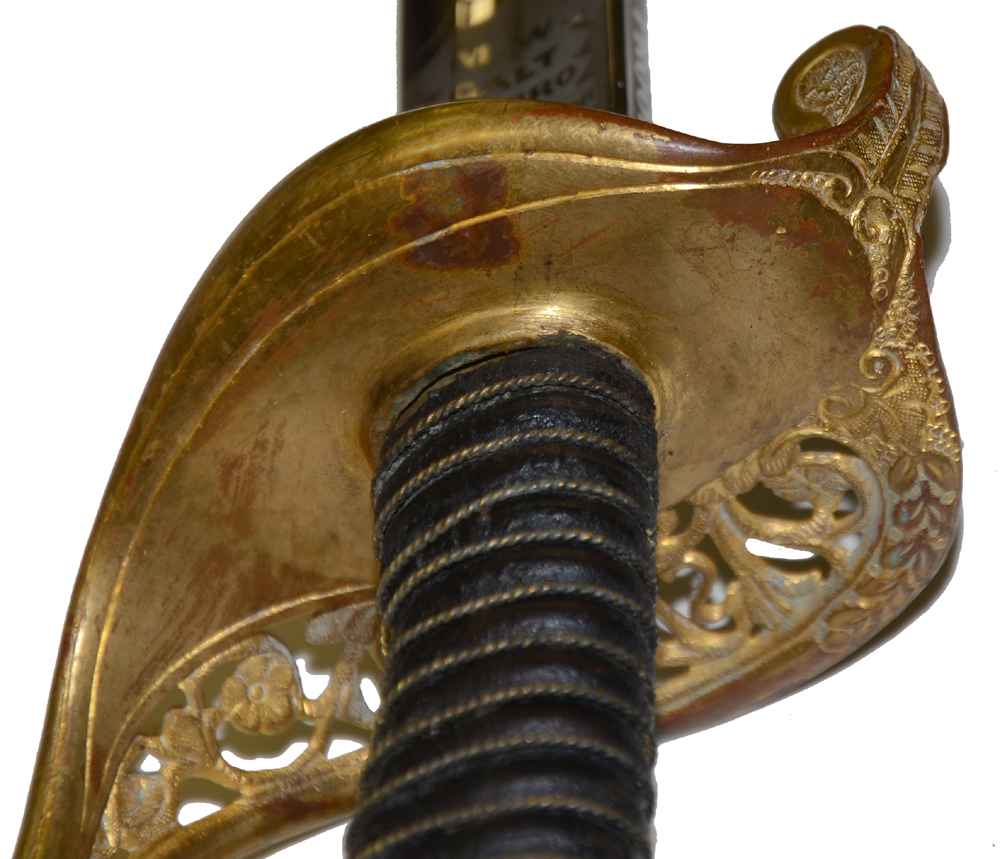

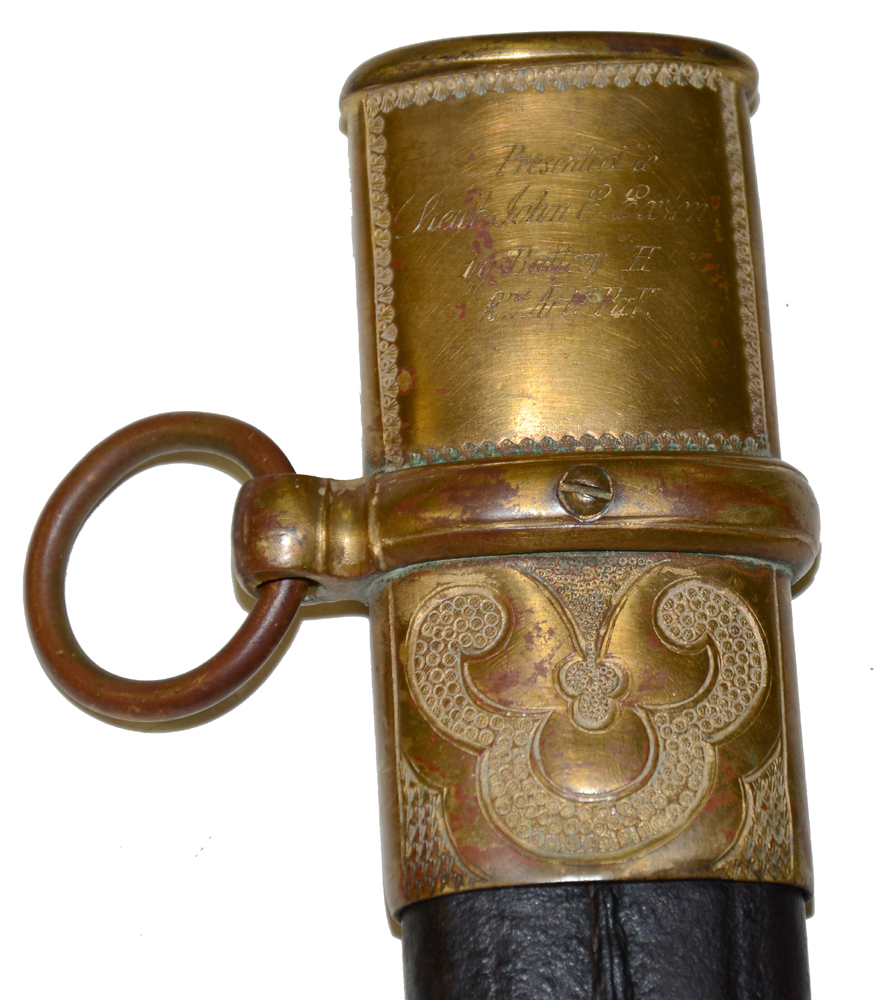
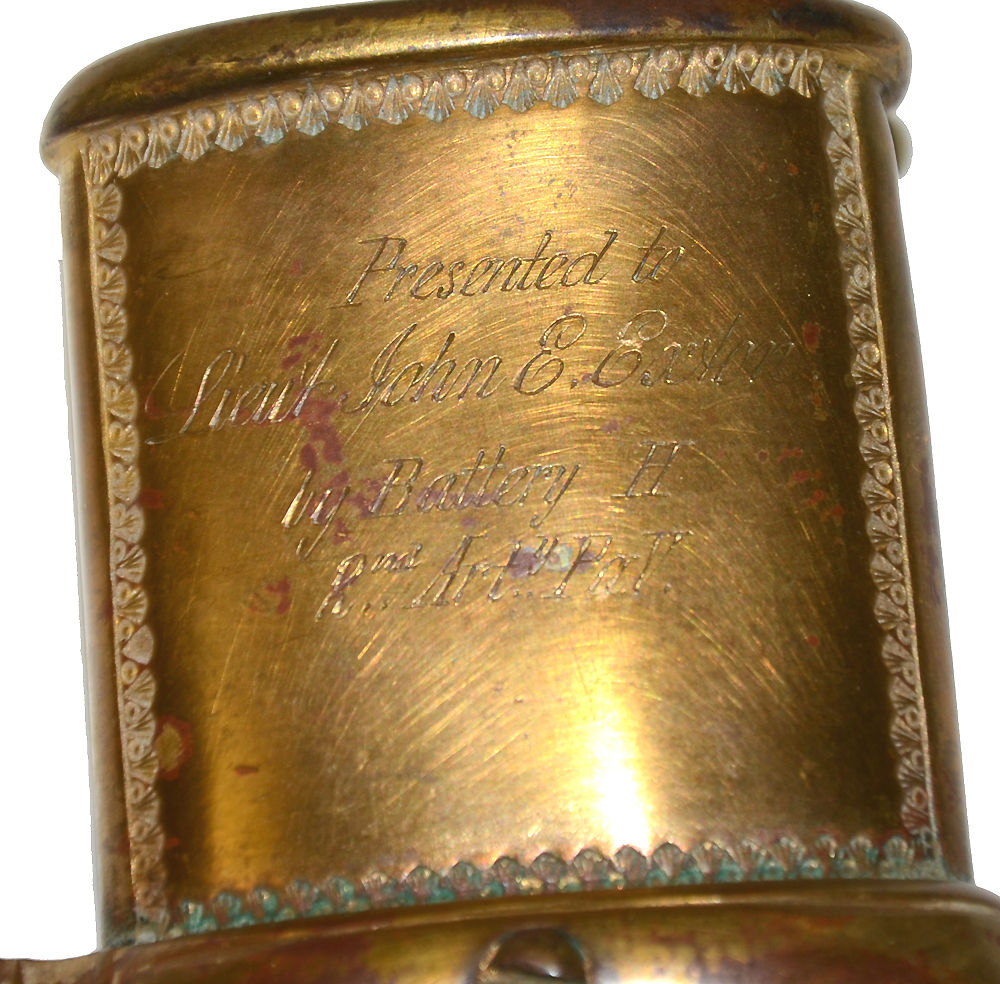
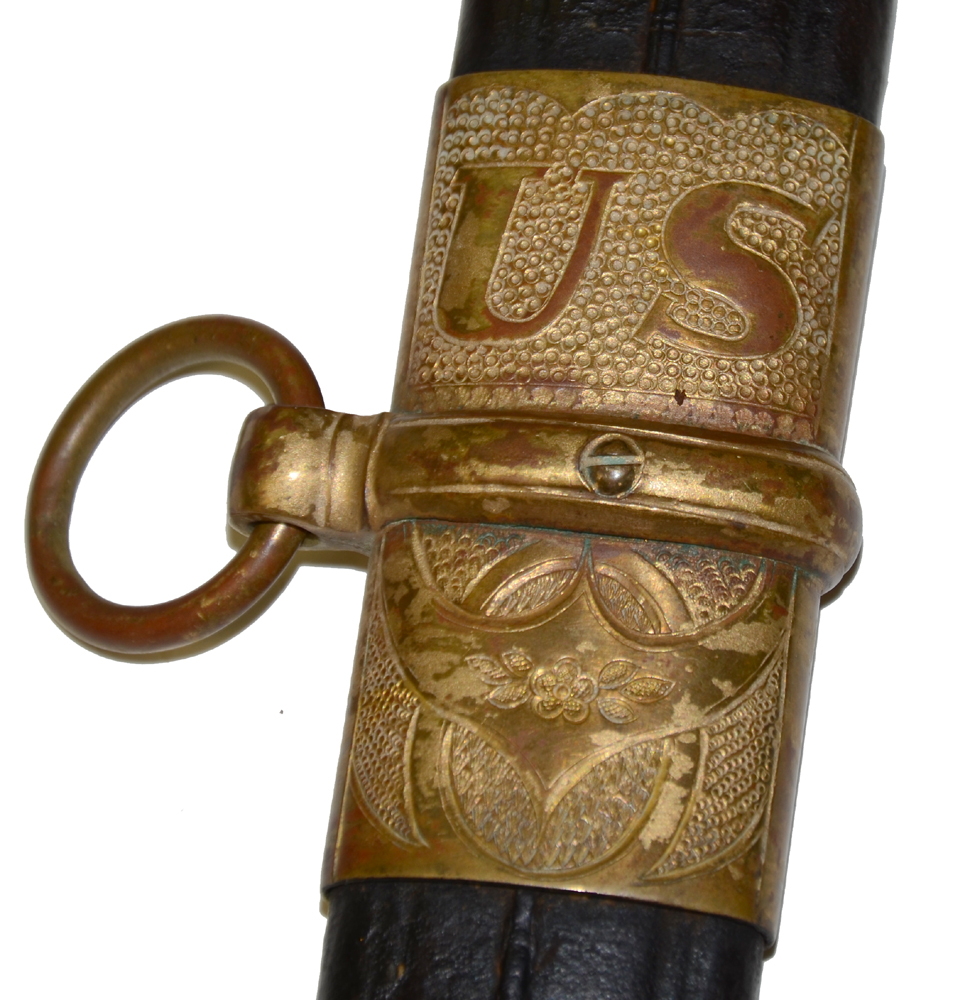




$3,000.00 SOLD
Originally $4,000.00
Quantity Available: None
Item Code: 870-364
Manufactured: Import / Washington, D.C.
Maker: Import / M.W. Galt & Bro.
Year: C1863
Model: M1850 Foot Officer
Size: 32.1 inch blade
Import style foot officer retailed by and etched on the obverse: M. W. / Galt /& Bro. / Washington, D.C. followed by a large (10.5 inch) center etched panel with military trophies. The reverse is etched Monitor with an equally large panel with an upside down U.S. The guard is a higher grade foot officer with a U.S. in the guard design, stippling on the quillon, top of the knucklebow and dotted around the pine. The grip is thin with a high swell, covered in leather with fine twisted brass wire. The scabbard is leather with fancy pressed design mounts on both sides. There is a presentation panel that reads, “Presented to / Lieut. John E. Exton / by Battery H / 2nd Art. PaV.” As can be seen in the photos above, at some point the sword was placed in the scabbard and pushed in forcefully enough that the blade penetrated the bottom of the drag.
John Exton enlisted as a Private on 11/5/61; on that date he mustered into Co. H, 2nd PA Heavy Artillery. Promoted to 1st Sgt. 12/19/61, Sgt. Major 8/1/62. On 11/27/62 he was promoted to 2nd Lieut. and transferred to Co. B. On 4/20/64 he was promoted to Captain and transferred to Co. D, 2nd PA Provisional Heavy Artillery. Exton is listed as being wounded at Petersburg, VA on 6/17/64. On 9/5/64 he was transferred to Co. B, 2nd Pennsylvania Heavy Artillery. Exton mustered out on 12/29/64. [ld] [ph:L]
~~~~~~~~~~~~~~~~~~~~~~~~~~~~~~~~~~~
THIS ITEM, AS WITH ALL OTHER ITEMS AVAILABLE ON OUR WEB SITE,
MAY BE PURCHASED THROUGH OUR LAYAWAY PROGRAM.
CLICK HERE FOR OUR POLICIES AND TERMS.
THANK YOU!
Inquire About MODEL 1850 FOOT OFFICER’S SWORD WITH “MONITOR” BLADE BY M.W. GALT & BRO., WASHINGTON, D.C., PRESENTED TO LT. JOHN EXTON BY BATTERY H, 2ND PENNSYLVANIA HEAVY ARTILLERY
Most Popular
Historical Firearms Stolen From The National Civil War Museum In Harrisburg, Pa »
Theft From Gravesite Of Gen. John Reynolds »
Selection Of Unframed Prints By Don Troiani »
Fine Condition Brass Infantry Bugle Insignia »
Large English Bowie Knife With Sheath 1870’S – 1880’S »
Imported (Clauberg) Us Model 1860 Light Cavalry Officer's Saber »
featured item
RARE M1840 U.S. ARTILLERY OFFICER’S SABER MADE BY AMES BUT ETCHED AND RETAILED BY SCHUYLER, HARTLEY AND GRAHAM: THE ONE IN THE BOOK!
This is an extremely rare M1840 U.S. artillery officer’s saber made by Ames but etched and retailed by Schuyler, Hartley and Graham. Thillmann knew only of this one example, and until it was found it was unclear if Schuyler, Hartley and Graham… (870-637). Learn More »


